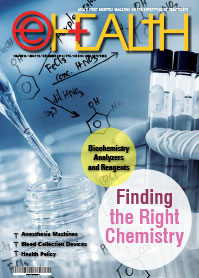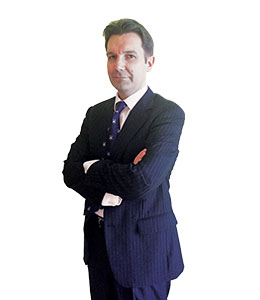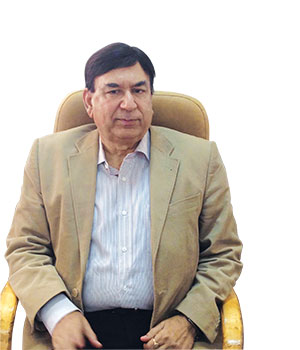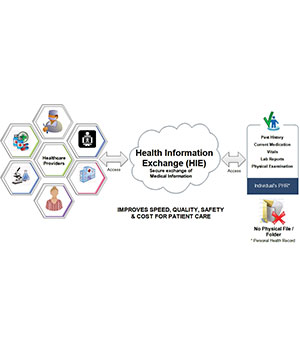
Short hospital stay, less medication and lesser costs are the future says Dr. Tapan Ghose, Director & HOD, Cardiology, Paras Hospital, Gurgoan
Recently, you hit the headlines for performing a successful day care angioplasty surgery. Please tell us something about it.

Yes, indeed, Paras Hospitals has become the first hospital to successfully perform a day care angioplasty. Angiography is performed in many centres as a day care procedure (including ours). However, angioplasty has not yet been performed in our country as a day care procedure. Recently, I had a patient from Balia, Uttar Pradesh, Mr VK, who suffered from chest pain/angina even while walking for some distance. Angiography was performed earlier on the patient and it showed 80-85% blockage and hence he was advised angioplasty. The patient wanted short hospital stay, best treatment /therapy at the lowest cost. I offered him transradial day care angioplasty with deployment of bio-resorbable vascular scaffold (vanishing stent or biological stent), transradial (through the wrist artery) angioplasty using BVS as a day care procedure. Short hospital stay translated into lesser cost. We admitted the patient in the morning and discharged him in the evening the same day after successful angioplasty through the wrist artery using BVS. He has been doing quite well ever since. It was quite a challenge to provide the patient the treatment plan that he had requested for and desired. The entire cardiology team accepted the gauntlet and came up with a novel way to achieve our goal. We certainly wish that our efforts are accepted on a wider platform and soon people start opting for the same.

What preparations were made for the surgery?

We had to move with utmost caution. We understand after all that it is human life that we are dealing with. All the blood investigations were carried out as a day care procedure beforehand. He was put on dual anti-platelet therapy (double blood thinner). He was admitted in the day and the angioplasty was performed through the wrist as a standard procedure. The arterial sheath was removed in the cath lab and he was observed in the hospital for 5 hours and discharged in the evening. We maintained a close telephonic contact with him till the next morning visit and thereafter. Our cath lab and ER was activated for any emergencies. Our cardiac surgery team was also alerted beforehand. Luckily everything was fine and none of the services were required.

We were confident about our skill and the cumulative team work. The vision was clear and we all were certain about the objective and goal that we had to achieve.
What new developments have taken place in cardiology department at Paras?
Since Nov 2013 many new and positive initiatives have been pursued. We started transradial angioplasty programme including transradial primary angioplasty programme at Paras which offers 24X7 365 angioplasty facility through the wrist artery. We also started doing device closure of the congenital heart defects (ASD and VSD closure). Gradually our department shifted to trans-radial route in 90% of cases. Our management was kind enough to re designate the cardiology department as Paras Transradial Cardiology Centre. We also did the first transradial day care angioplasty in India, recently. More than 10 research papers have been presented at various international and national meetings from our department in the last few months. We have all understood that positive change can only take place if there is cumulative initiative. Paras Hospitals, Gurgaon has an excellent cardiology team with a keen insight in patient care delivery, diagnosis and treatment.
How is day care radial angioplasty unique in India?
Day care angioplasty had been in practice in Europe for almost 10 years. Ironically, United States and India have lagged behind. This applies to even transradial procedures. Starting transradial procedures in 2006 I initiated transradial primary angioplasty centres in Delhi NCR region. With this experience and with a very good clinical infrastructure at Paras Hospital, I thought the time has come to move forward. Fortunately there was a patient asking for the same treatment modality. This led us to successfully perform the first day care angioplasty in India. I am not aware of any centre offering routine day care angioplasty in this part of the country. I sincerely hope that India is soon recognized as a country that advocates transradial angiography and angioplasty. I also wish that in the medical colleges training and development is given on the same. Short hospital stay, less medication and lesser costs are the future- after all medicine is all about evolution!
Day care angioplasty had been in practice in Europe for almost 10 years. Ironically, United States and India have lagged behind
What are the hindrances for transradial angioplasty in India?
I think this transradial angioplasty / angiography depends on 3 aspects – training, skill and the will.
Training – Transradial procedures are only taught in small single centre meetings and as a part of national meetings. There should be structured training programs in trans-radial procedures in all the university hospitals. National Board of Examinations and other bodies should formulate a structured training programme in transradial procedures and ensure the quality and outcome.
Skill– It has a steep learning curve. Supervised training by mentors is essential to mastering the skill.
Will– The ease of operating through the femoral route is not there in radial route. The radiation exposure to the operator is higher at least at the initial part of training hence a strong willed person, well conversant in femoral route, can embrace the radial route very easily.
Please recount some of your past success stories.
I reported reciprocal ST segment changes in the ECG in acute pancreatitis simulating acute myocardial infarction, first time in the world literature. I have also presented the utility of atorvastatin in Indian patients in 2000 for the first time. I also recently reported in a multi centre study about the innominate tortuosity (Tapan Sign) encountered during transradial and transulnar procedures. This has been presented in many national and international meetings. A new technique Wire first technique during right internal mammary graft angioplasty has been described by me at an international meeting in Singapore in 2013. I have initiated transradial angioplasty program including transradial primary angioplasty program at two prominent corporate hospitals in the country, including Paras Hospitals. I also have the credit of doing first prospective study of direct culprit lesions angioplasty to LAD artery without prior knowledge of RCA anatomy. This has been recently presented at TCT 2014 held at Washington DC. Last month we performed the first day care angioplasty of the country and started the day care angioplasty programme at Paras Hospital.
Be a part of Elets Collaborative Initiatives. Join Us for Upcoming Events and explore business opportunities. Like us on Facebook , connect with us on LinkedIn and follow us on Twitter , Instagram.
"Exciting news! Elets technomedia is now on WhatsApp Channels Subscribe today by clicking the link and stay updated with the latest insights!" Click here!















